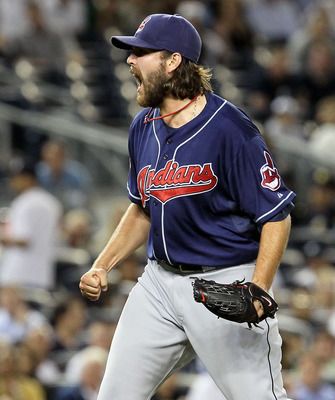 |
| Chris Perez (Photo: AP) |
No one really knows what the Indians are up to this offseason and how things will look when the dust settles. They have some money to spend in free agency and can take on some salary in a trade, and they have proclaimed that they will upgrade the offense with some needed right-handed power.
General Manager Chris Antonetti and the rest of his staff have spent a lot of time this offseason surveying the options both in free agency and trade to help bolster their lineup. The Indians are taking a creative, exhaustive approach to fill their lineup needs, and you can bet that while attending the GM Meetings in Milwaukee last week that the wheels were already put in motion for several potential free agent signings and trades.
After you eliminate the upper tier free agents that are out of the Indians price range (sorry folks, Pujols and Fielder are wishful thinking), the free agent pickings are slim. There are some free agents who have some star power that could be affordable and they will certainly entertain – players like Aramis Ramirez, Michael Cuddyer, and Josh Willingham – but in the open market there are no guarantees and most of the players will end up being too costly to sign.
If the Indians make any kind of splash this offseason it is probably going to have to come via the trade route.
The trade market is a much more level playing field for teams like the Indians. In free agency it is all about who has the most money and who is willing and capable to take on the most risk. But in the trade market the best currency is not money but players, so if you have very good prospects or a surplus of good Major League talent to trade then you can acquire almost anything if it is available.
The Indians depleted their high end prospect talent in the upper levels of their farm system this past season with trades and promotions. The trade of left-handed pitcher Drew Pomeranz and right-handed pitcher Alex White in the Ubaldo Jimenez deal combined with the promotions of third baseman Lonnie Chisenhall and second baseman Jason Kipnis leaves very little if any impact quality talent in the minors for the 2012 season. A few good players remain in the upper levels, but most of their elite talent is now in the lower levels of the minor leagues and a few years away.
With the lack of much high end talent in the upper levels of the Indians’ minor league system for teams to covet in a potential trade for a Major League bat, the Indians may have to result to trading a player or two already on their 25-man roster. Obviously they would not want to trade from a position of weakness where they fill one but create another. No, the idea here would be to trade from an area of strength where a hole that is created can be adequately backfilled from within.
Everyone knows that the Indians have a black hole right now at first base and even with Grady Sizemore set to return they still have the need for a good right-handed bat in the outfield. They do not have a reliable every day option within the organization to fill those spots to start next season. What they need to do is assess the team and determine where they could best risk losing a player in order to fill one of those holes.
That area of risk may be the bullpen.
If you take a look at the entire Indians organization from the big league team down to Double-A Akron your assessment would come to realize that their strength lies in relief pitching. Yes, they have depth in the starting rotation, but the Indians have a plethora of relief pitching prospects that could impact the Major League team to varying degrees and are ready for (or close to) an opportunity.
Indians fans saw some of those relievers last year as right-handers Josh Judy and Zach Putnam and left-hander Nick Hagadone made their big league debuts and saw limited action. It was also seen firsthand with the emergence of right-hander Vinnie Pestano who came into the season with almost no big league experience but by the end of the season proved to be the best reliever on the Indians’ staff.
Pestano is a prime example of the talent in the Indians’ farm system that is ready to emerge next year. Someone like Putnam or Judy could make the same splash next year that Pestano did this past season. Others like right-handers Chen-Chang Lee (C.C. Lee) and Hector Rondon could also factor into the mix at some point as well. And beyond them are a litany of relief pitching prospects headed by right-hander Tyler Sturdevant that are almost ready and could help the big league bullpen later in the season.
Answer and listen
The Indians have already had and will continue to get a lot of phone calls on the availability of a lot of players on their big league roster. They will decline most of the offers thrown their way, but one player they should keep an open mind about and listen to offers for is right-handed closer Chris Perez.
It may sound crazy to trade your closer; one that was also named to the All Star team this past season. But given the depth the Indians have with relief pitching and the lack of a big trading chip or two in the minors, an All Star closer like Perez would have some value on the market for a team looking to fill their closer need.
The closer’s market in free agency is already off its rocker this offseason as the Phillies signed right-handed pitcher Jonathan Papelbon for four years, $50 million. Former Phillies right-handed reliever Ryan Madson also had a four year, $44 million deal on the table before it was pulled. The one thing teams with closer needs know right now is that if they want to sign a closer in free agency they will have to overpay.
With that in mind, executives from other teams will surely look for other options to fill their closer needs. Several teams like the Reds and Blue Jays are rumored to be considering the trade route to pick up a closer. As these teams and others search through every possible option to fill their closer need, perhaps that search will take them to the Indians’ doorstep.
That’s where Chris Perez comes in.
Perez, 26, was an All Star last season and went 4-7 with a 3.36 ERA and was 36-for-40 in save opportunities. He helped anchor a very strong Indians bullpen and at the moment looks to have solidified himself as the Indians’ closer for the next few years.
But is Perez’s future really that secure with the Indians? And did he have as good a year as the save numbers suggest?
From a pure results standpoint, yes, he did his job and nailed down a high percentage of his saves (90%). But when putting a baseball team together for the next season it is often not about looking at what your players did the past season or in previous seasons, it is more about accurately predicting what your players will do the next season and in future seasons. One of the best ways to do that is to look at their peripheral statistics to try and forecast whether a given player’s success or misfortune will continue.
In other words, how likely is Perez to save 90% of his games again next year?
By now most people should know the Indians are huge proponents of statistical analysis which includes a lot of the more advanced metrics, some of which are not publicly available. When looking at some of the more important public stats for Perez last year there has to be some concern with him going forward and if that 90% conversion rate on saves can continue.
The warning signs are there. Perez had a drastic decrease in his strikeout rate last season as he had a paltry 5.9 K/9 rate, which was down almost four points from his career 9.5 K/9 coming into the season. He also had a poor 1.50 K/BB ratio, and in the advanced metrics department had a 0.1 WAR (wins above replacement).
In fact, look at the WAR for the most common Tribe relievers last season (courtesy of Fangraphs):
Vinnie Pestano: 1.5
Joe Smith: 1.2
Rafael Perez: 0.8
Chris Perez: 0.1
Frank Herrmann: 0.0
Tony Sipp: -0.1
Chad Durbin: -0.3
WAR is not a common stat used by baseball fans as it is unknown to many and can be confusing, but it is one of the top stats baseball teams use. It is a helpful statistical evaluation tool for players because it combines a few stat attributes and in a way spits out a summary of how important a player was to the team and if their performance was replaceable by another player.
With a 0.1 WAR, Perez was right at what is called “replacement level”. In fact, he was along the lines of fellow bullpen mate right-hander Frank Herrmann who is your typical fungible middle reliever. The 0.1 WAR suggests that Perez performed at a replacement level where a minor leaguer or another bullpen option could have had the same effect on the team.
This is hard to grasp because it would be hard to see how a minor leaguer could come in and close out games at a high rate or any at all, but going beyond the saves and going strictly by the numbers they were very mediocre and at that “replacement level.”
Pestano is the future
So how is Perez replaceable? And if he is not closing games for the Indians, who should?
That’s easy. Vinnie Pestano.
Pestano, 26, is more than a capable replacement for Perez and would more than adequately fill the closer need for the team if Perez were traded.
Pestano is ready for the opportunity. He made his Major League debut at the end of the 2010 season and pitched 5.0 total innings, so he came into the 2011 season as a rookie and had as great a first full season in the big leagues than any player in the Indians organization in some time.
Pestano made 67 appearances for the Indians and went 1-2 with a 2.32 ERA. The ERA was nice and one of the best in the American League among relievers, but ERA can often be a misleading stat. Beyond his ability and personality that are both suitable for the closer’s role, the deeper stats from this past season show he was an elite performer and is one of the top late inning relievers in the game.
Pestano ranked 5th among American League relievers in strikeouts (84), 8th in holds (23), 7th in batting average against (.184), 11th in WHIP (1.05), 14th in K/BB (3.50), 4th in K/9 (12.2), and tied for 11th in appearances (67). For the advanced metrics fans out there, they also favored Pestano as his 1.5 WAR was 11th among American League relievers, and he also ranked 8th in FIP (2.67) and 7th in xFIP (2.80).
By comparison, Perez had just three less appearances (64) than Pestano but among AL relievers he ranked tied for 55th in strikeouts (39), 4th in saves (36), 23rd in batting average against (.215), 32nd in WHIP (1.21), 62nd in K/BB (1.50), and 60th in K/9 (5.9). From the sabermetric perspective Perez ranked 45th in WAR (0.1), 46th in FIP (4.27), and 58th in xFIP (5.01).
Those are some pretty damning numbers that outside of the save total show that Perez was a very mediocre performer last season.
And it is not just the numbers from last season that suggest Pestano is the Indians’ closer of the future and maybe the present. He was born with the mentality to pitch in high leverage situations late in games and has about as much experience as a closer as any first year player in the big leagues can have. He closed 27 games in college at Cal-State Fullerton and pitched exclusively in a closer role in the minors where he totaled 71 saves in 166 games.
The Indians could certainly afford Perez next season at the $4-5 million he will likely command as a second year arbitration player and he is still under team control through the 2014 season. But his sudden inability to miss bats and a lack of life on his fastball should be a big concern for the Indians and this is why they should be open to the idea of a trade.
Obviously other teams are privy to the same stats everyone else is looking at and also see the same red flags, but even with the sub-par numbers from this past season there may still be a team willing to overlook them because of his young age, historical performance, moxie, and most importantly his contract. If the Indians were to find a palatable trade partner that is in search of a closer that is willing to part with a quality big league corner outfield or infield bat in return, they would surely have to listen.
No one is saying the Indians should trade Perez for prospects. No way. That’s not where they are as a team as they need to focus most of their efforts on acquiring big league talent. And no one is saying the Indians should dump Perez either. He’s a valuable member of the Bullpen Mafia and barring a good trade offer the Indians should keep him.
But if a team comes calling and offers up a deal that gives the Indians a nice bat to add to their big league lineup, it is an offer that the Indians should seriously consider. With what is perceived as a surplus of big league relief pitching talent, it arguably makes Perez the Indians best trade chip that they can use to improve their lineup, and they should consider cashing it in.
Follow Tony and the Indians Prospect Insider on Twitter @TonyIPI. Also, his latest book the 2011 Cleveland Indians Top 100 Prospects & More is available for purchase for $20.95 to customers in the US (shipping and handling extra).









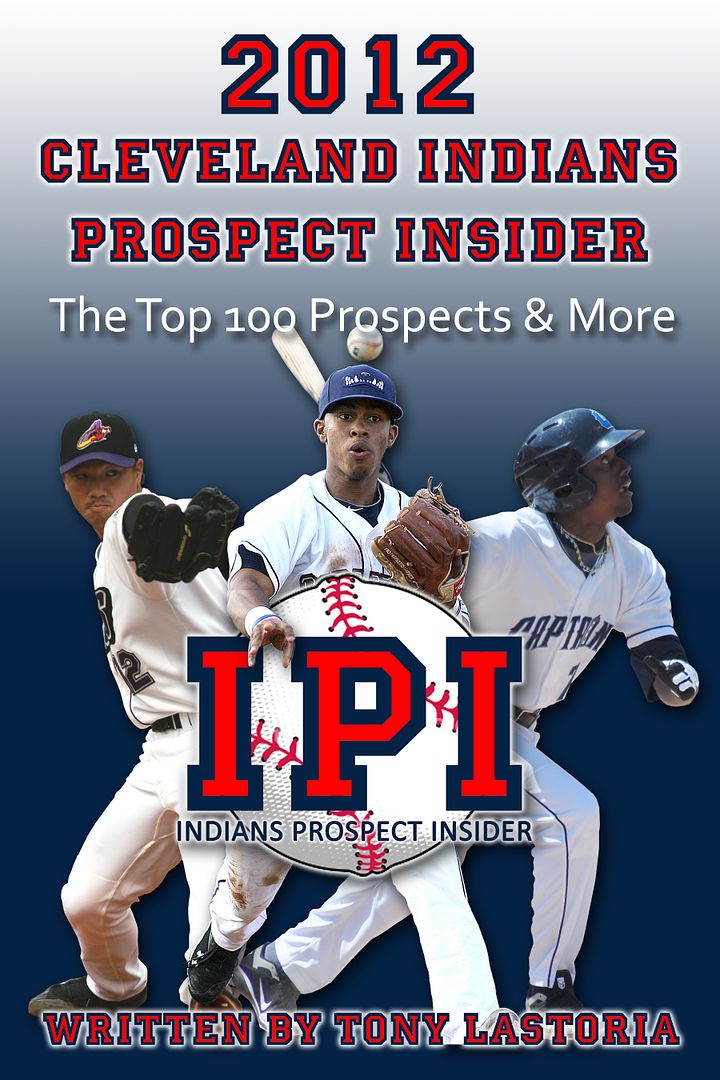
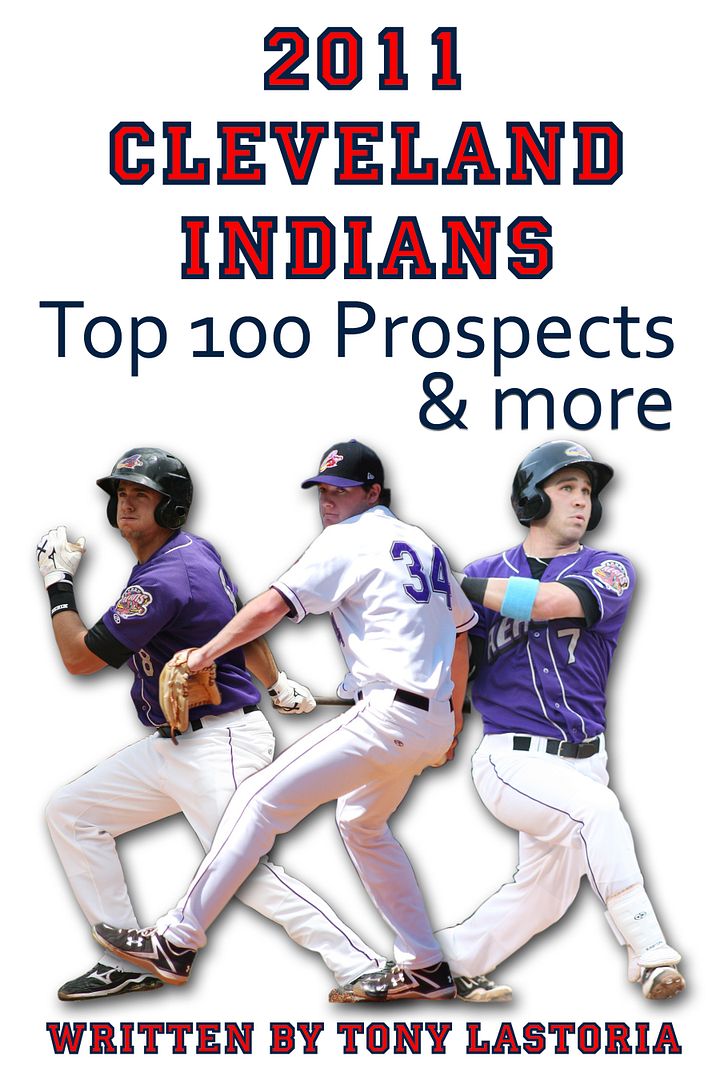
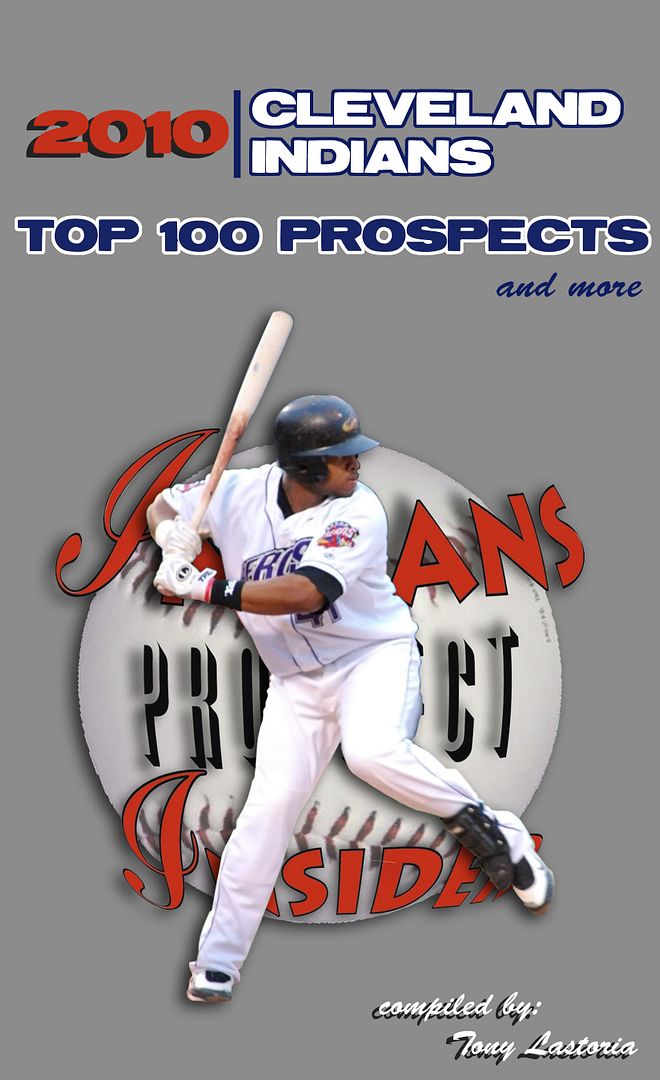
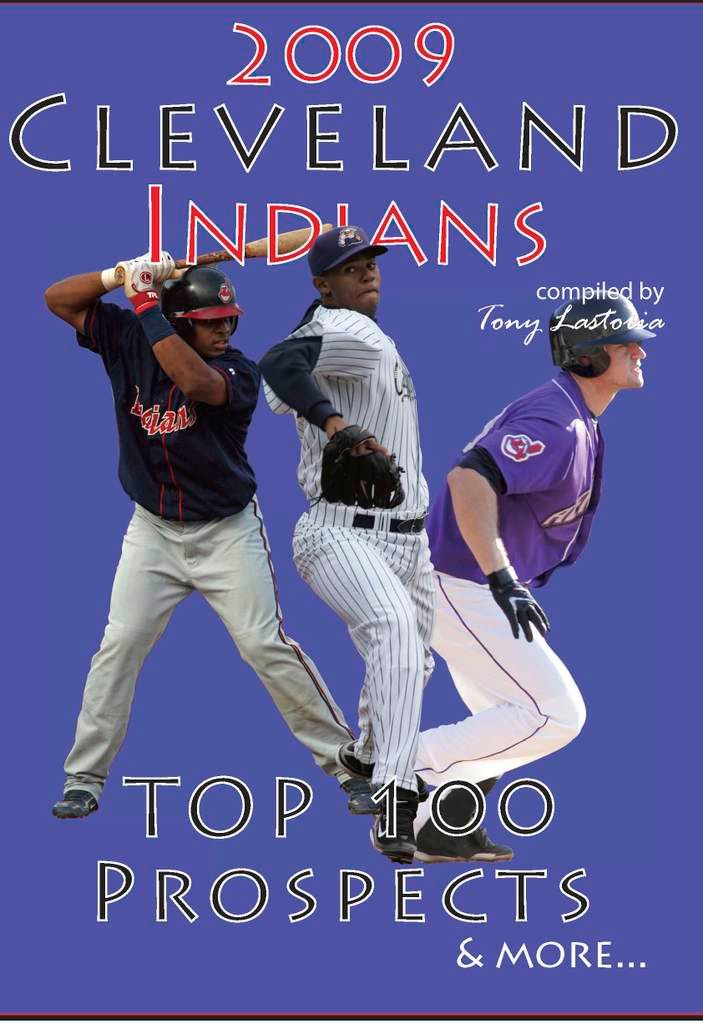
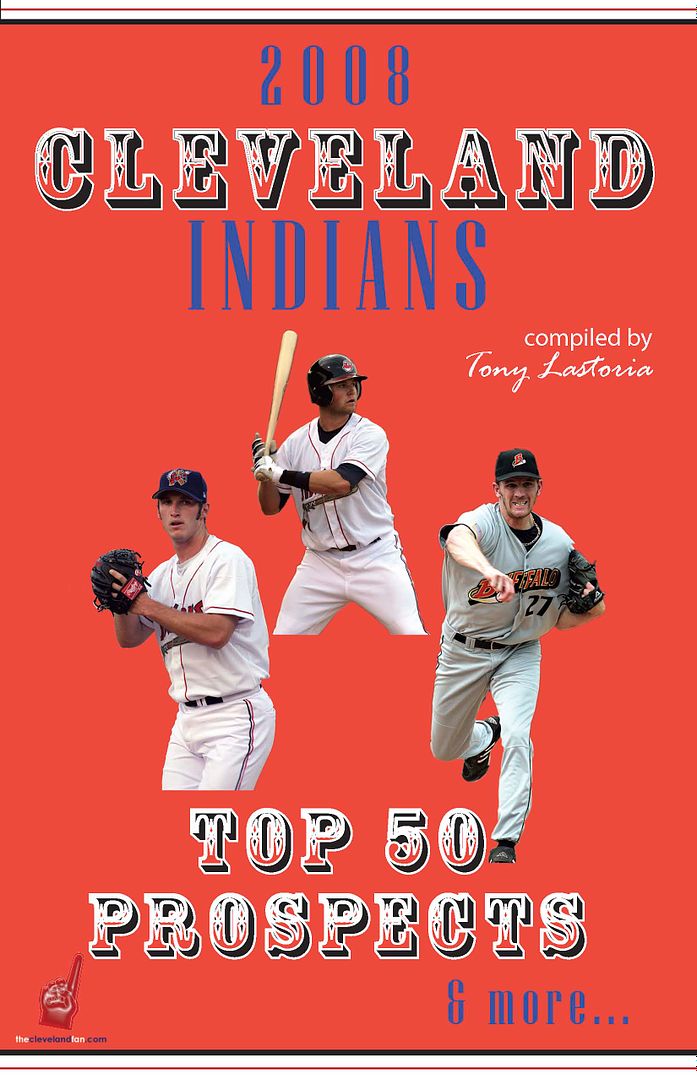
 Everything on this site is free, but for those interested in making any monetary contributions to help support the stability and growth of this site please click on the "Donate" button below.
Everything on this site is free, but for those interested in making any monetary contributions to help support the stability and growth of this site please click on the "Donate" button below.


5 comments:
I would trade Perez in a deal for a bat but not for purely statistical reasons. I'd also look at the fact that Perez is a Super 2 and if he is allowed to continue to close games for the Tribe he will take up too much of the payroll in coming years.
His future earnings would be suppressed greatly if he were dealt to a team to be a setup man rather than a closer. The Indians could use that to their advantage and then look to get him signed through his arbi years at a discounted rate which would allow the team the flexibility to move him into the setup role if Pestano is the better option, would allow them to trade him to a team (later) that needs a closer and Perez salary would be a huge benefit, etc.
There certainly is a market for Chris Perez as other organizations could look to bolster their closer/setup positions. The Angels could combine Walden/Perez, Boston could combine Bard/Perez, the Blue Jays are looking for both closer/setup, and of course......the Marlins in Perez backyard.
The three things that extinguishes some of Perez value are the saturated closers market including Andrew Bailey and Houston Street on the market, the escalating salary that Perez will receive in arbitration if he continues to close games, and the statistical argument you laid out above that suggests a certain level of risk to putting Perez in that same role in 2012.
I'd suggest the Indians best course of action would be to shop him (of course if anyone overpays you jump) and use the leverage of him not being a closer to sign a contract extension. Revisit the Perez trade market at the deadline or next offseason depending on how 2012 turns out.
With all of the bullpen depth we have as a team, I think we should not only explore trades with Chris Perez, but for Rafael Perez and Joe Smith as well.
Since they are relievers, they will not likely command draft pick compensation after they are a free agent or would be a type C or D designation, so let's try and get something for them because we have a lot of talent in the AAA and AA levels who can step right in and do well.
Especially some of the top teams who need help in the bullpen, we can grab someone at the AAA level who may be blocked by a high priced free agent or someone like that
I definitely think Perez should be looked at in a trade to a team looking for a closer or even a setup man. The statistical evidence is damning, but teams may be swayed by his 3 years of control and still not overpriced compared to a lot of other guys available on the open market.
As for trading other guys like Joe Smith and Rafael Perez, yes, I would be open to trading them too. But I am against a large turnover in the bullpen. While bullpens can be volatile from year-to-year, I do not like the idea of trading 2-3 of the bullpen guys from last year. While they surely may regress, it is also hard to expect 2-3 rookies to come in and perform better. I think you trade one guy...maybe two max for the right deal(s).
Pacing yourself is critical in any sport.
Players subconsciously do this (obvious in blow-out NBA & NFL games.)
Closers often do this.
Perez may be worn out for years to come or may be ready for a big year.
Like you, Tony, I don't want major turnover.
Bullpens fall apart quickly.
Rule 5 draft may have some bearing on what the Indians do or don't do.
Excellent analysis by GrubDaddy & Mr. Negative.
Hey Tony -
Excellent article. Of course, dealing from a position of superior depth is the best way to improve the team.
I have been researching the Indians interest in Yonder Alonso, who I felt early in 2011 should be a prime target for the Tribe. The Reds need a mid-front line starter, or if Chapman is designated for the rotation, they'd need a closer. As the Reds are almost as empty in their pitching arsenal as the Tribe is with OF/1B prospects, I think a large deal could be created to interest the Reds. Using C. Perez and either Tomlin of Carmona as the base, plus a choice of one from the Huff, Gomez, Mcallister trio, plus a mid-level prospect, to acquire Alonso (1B), Chris Helsey (OF), and a 7-20 ranked Reds' prospect at a position of Tribe need (or pitching) might be in an area of opportunity for both teams.
Just a thought.
Post a Comment